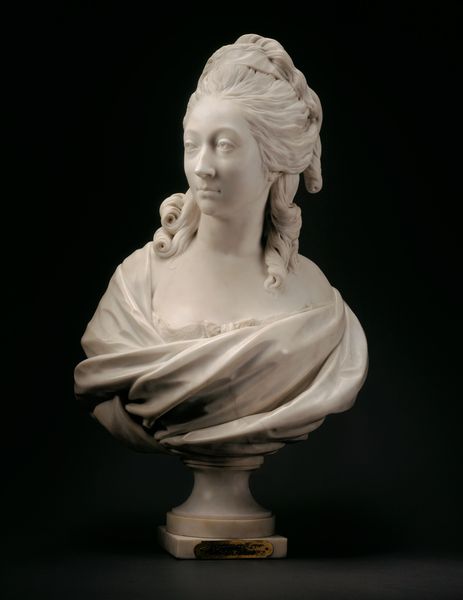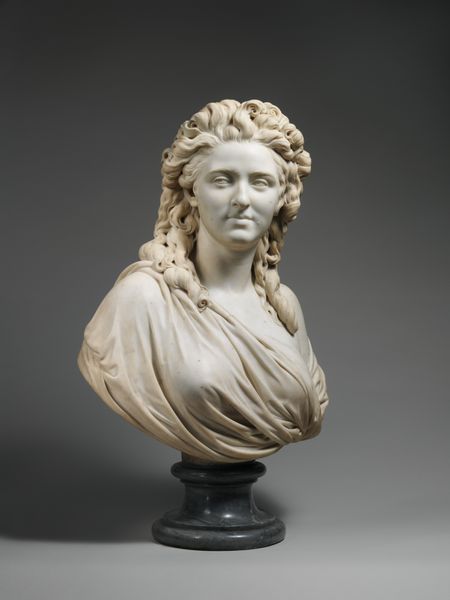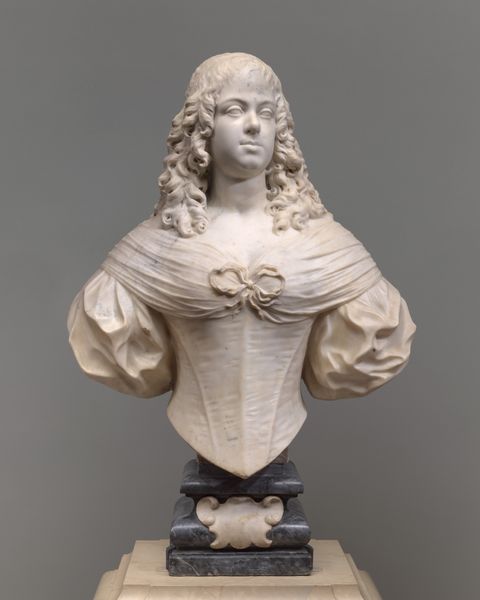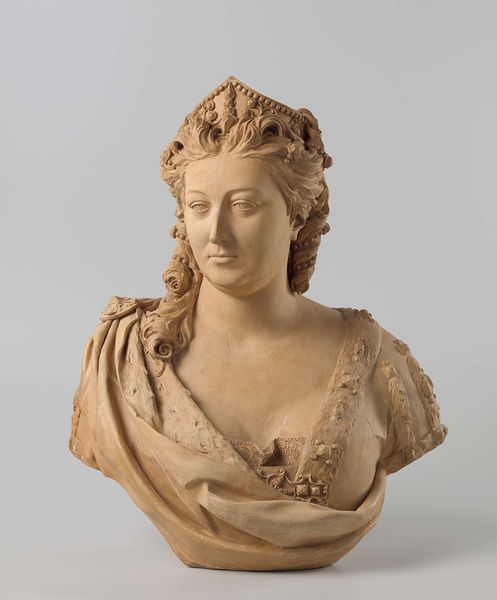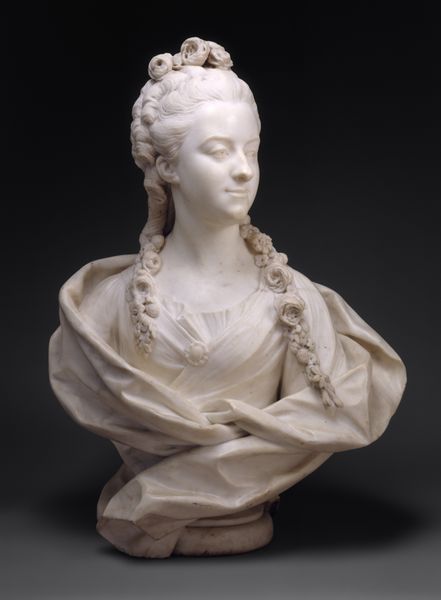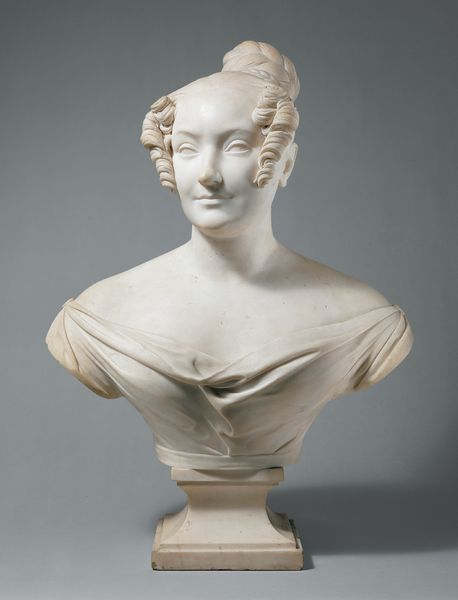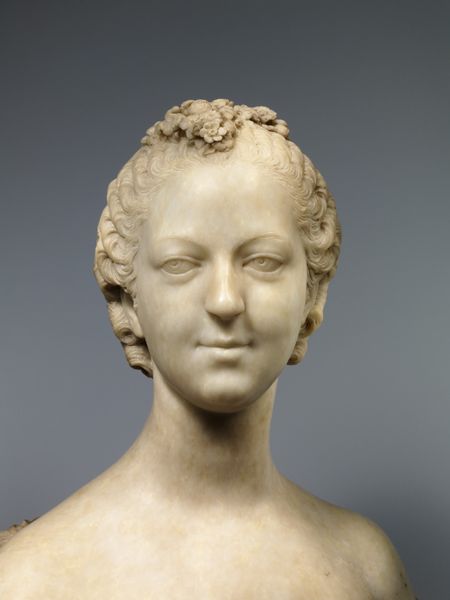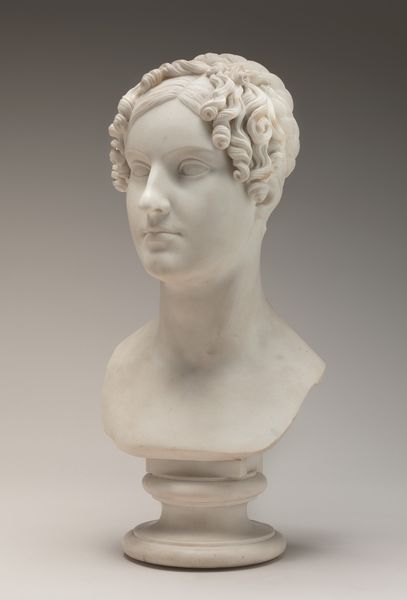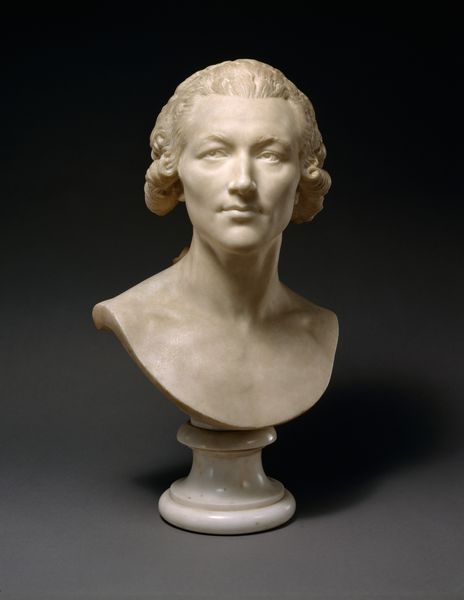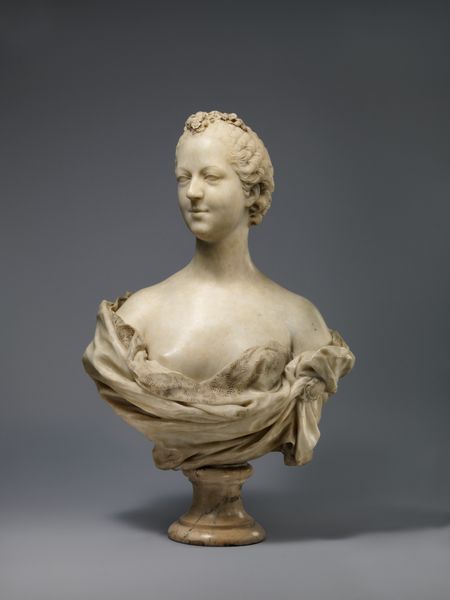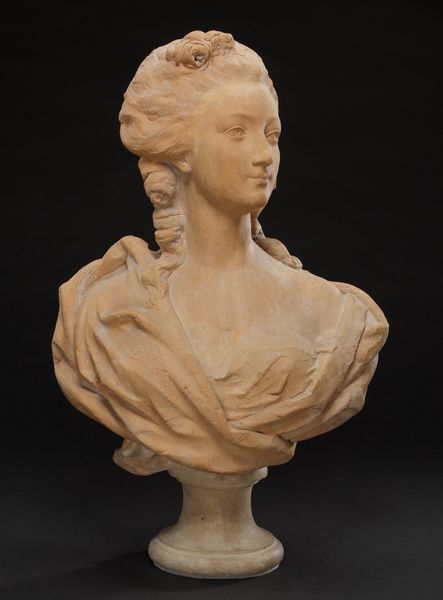
sculpture, wood
#
portrait
#
neoclacissism
#
sculpture
#
sculpture
#
wood
#
history-painting
#
academic-art
Dimensions: overall: 61.12 × 43.66 × 31.75 cm (24 1/16 × 17 3/16 × 12 1/2 in.) base (width x depth): 20 × 17.62 cm (7 7/8 × 6 15/16 in.)
Copyright: National Gallery of Art: CC0 1.0
This is William Rush's wooden bust of Carl von Linné, also known as Linnaeus, sculpted in the late 18th or early 19th century. The elaborate wig, a symbol of status and intellect in that era, immediately draws our attention. Consider how such wigs, originally worn by men to emulate royalty, became intertwined with notions of authority and erudition. We see echoes of this in portraits across Europe, from monarchs to philosophers, each donning a similar mantle of coiled hair. The wig, however, did not originate in Europe; it emerged in ancient cultures as a protective head covering, shifting from utility to a powerful visual marker of social standing. This transformation speaks volumes about the enduring human desire to communicate identity through visual symbols. Even today, we subconsciously assign traits based on appearance, linking back to these historical precedents. Rush's sculpture is therefore a powerful reminder of the cyclical nature of symbols and the continuous reinterpretation of visual language throughout history.
Comments
No comments
Be the first to comment and join the conversation on the ultimate creative platform.
